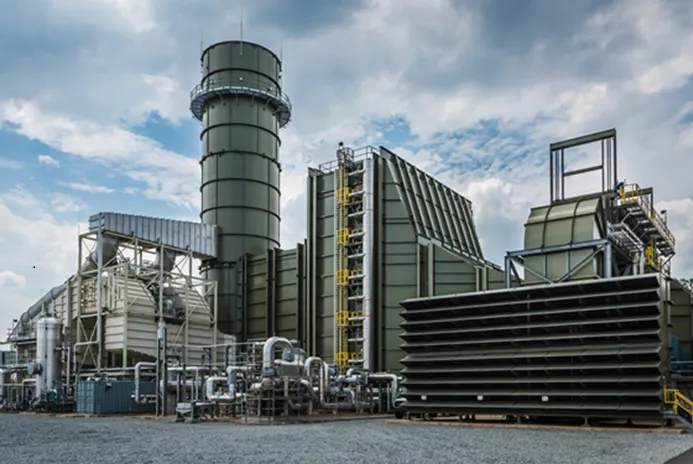Gas plants are facilities designed to process raw natural gas extracted from underground reservoirs. The primary goal is to remove impurities and separate valuable components, producing a clean, marketable product.
This processed gas is then transported through pipelines to consumers for heating, cooking, and electricity generation.
Key Components of a Gas Plant
A gas plant consists of several essential units, each serving a specific function in the processing chain:
a. Inlet Facilities
Inlet facilities are the initial point of contact for raw natural gas entering the plant. Here, the gas is received from gathering pipelines and subjected to preliminary filtration to remove large particles and debris.
b. Separation Units
Separation units are designed to divide the incoming gas stream into its primary components: gas, oil, and water. This is typically achieved using separators that utilize gravity and mechanical processes to facilitate the separation.
c. Treating Units
After separation, the gas may contain impurities such as hydrogen sulfide (H₂S) and carbon dioxide (CO₂). Treating units, such as amine gas treating systems, are employed to remove these acid gases, ensuring the processed gas meets quality standards.
d. Compression Units
Compression units are responsible for increasing the pressure of the gas, enabling it to flow efficiently through pipelines. Compressors are used to achieve the necessary pressure levels, ensuring the gas reaches its destination without significant loss.
e. Storage and Export Facilities
Once processed and compressed, the gas is either stored on-site in storage tanks or prepared for export. Export facilities include metering stations and pipeline connections that facilitate the transportation of gas to various markets.
The Gas Processing Sequence
The journey of natural gas through a processing plant involves several stages:
a. Reception and Initial Screening
Raw natural gas enters the plant through inlet facilities, where it undergoes initial screening to remove large particles and debris. This step prevents damage to downstream equipment and ensures the efficiency of the processing operations.
b. Separation of Liquids and Solids
In separation units, the gas stream is divided into gas, oil, and water phases. This separation is crucial for removing liquids and solids that can cause pipeline corrosion and affect the quality of the final gas product.
c. Acid Gas Removal
The separated gas often contains acid gases like hydrogen sulfide and carbon dioxide. Treating units, such as amine gas treating systems, are employed to remove these impurities, ensuring the gas meets environmental and safety standards.
d. Mercury Removal
Mercury removal units are used to extract mercury traces from the gas stream. Mercury is a toxic element that can damage processing equipment and pose environmental hazards, making its removal essential.
e. Dehydration
Dehydration units remove water vapor from the gas, preventing the formation of hydrates that can block pipelines. This is typically achieved using glycol dehydration units or molecular sieve dryers.
f. Compression
After dehydration, the gas is compressed to the required pressure levels using compressors. This step ensures the gas can be transported efficiently through pipelines to its destination.
g. Storage and Export
The processed and compressed gas is then stored in tanks or prepared for export.
Export facilities include metering stations and pipeline connections that facilitate the transportation of gas to various markets.
Safety Measures in Gas Plants
Safety is paramount in gas plant operations due to the potential hazards associated with handling flammable and toxic substances. Key safety measures include:
Regular Equipment Maintenance: Ensuring all equipment is functioning correctly to prevent leaks and failures.
Monitoring Systems: Utilizing sensors and alarms to detect gas leaks, pressure anomalies, and other irregularities.
Emergency Response Plans: Developing and practicing procedures to address potential emergencies, such as gas leaks or fires.
Training Programs: Providing comprehensive training for all personnel on safety protocols and emergency response actions.
Environmental Considerations
Gas plants must operate in compliance with environmental regulations to minimize their impact on surrounding ecosystems. Environmental considerations include:
Emission Controls: Implementing technologies to reduce emissions of harmful gases into the atmosphere.
Wastewater Treatment: Processing wastewater to remove contaminants before discharge or reuse.
Habitat Preservation: Conducting environmental assessments to protect local wildlife and habitats during plant operations.
Conclusion
Gas plants are at the heart of transforming raw natural gas into a vital energy source. Through a series of complex but well-coordinated processes, from initial separation to final compression and export, gas plants ensure that the gas we use for heating, cooking, and electricity generation is clean, safe, and efficient.
With safety and environmental considerations always a top priority, these plants play an essential role in meeting global energy demands while minimizing impact on the planet. Understanding how they work gives us a deeper appreciation of the technology that powers so much of our daily lives.
Related Topics:

